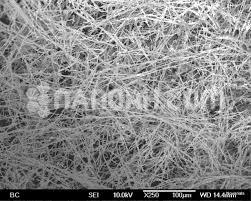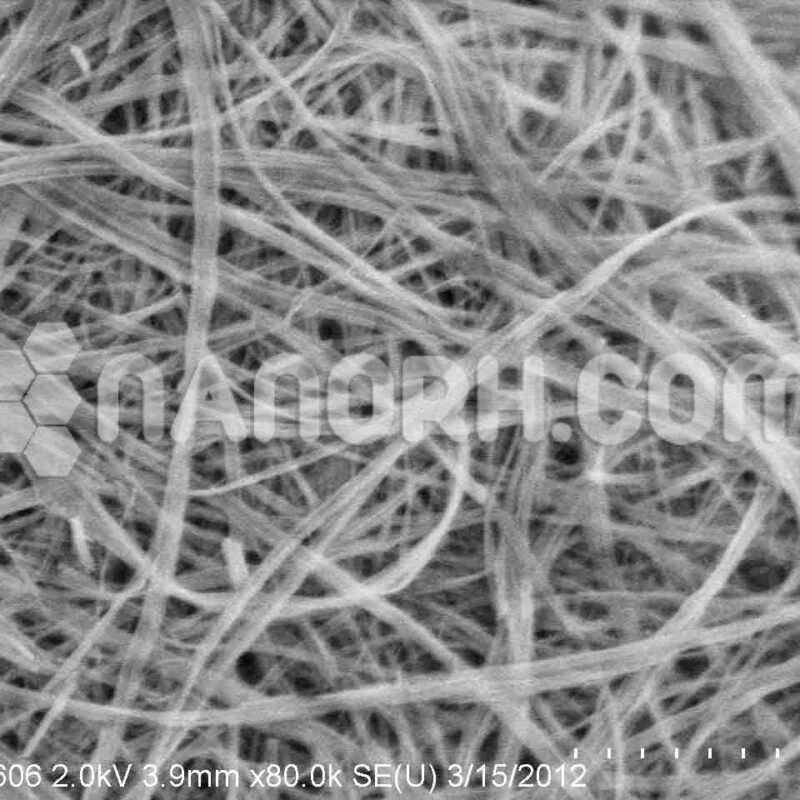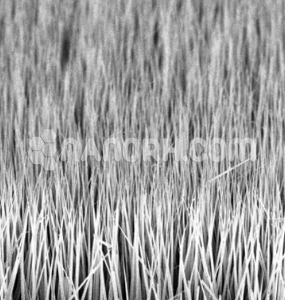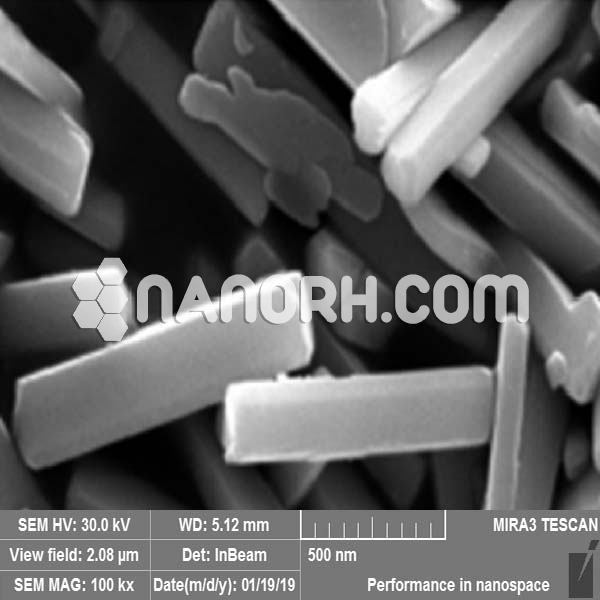Nickel Nanowires
Nickel Nanowires are elongated nanostructures with an average diameter of 200-300 nm and length of up to 200 µm. Applications for nickel nanowires include optical devices, sensors, solar cells, biotechnology, and microelectronics. Nickel nanowires are generally immediately available in most volumes.
| Nickel Nanowires | |
| Product No | NRE-13006 |
| CAS No. | 7440-02-0 |
| Formula | Ni |
| Average diameter | 30-50nm |
| Average Length | up to 500nm |
| Purity | 99.9% |
| Molecular Weight | 58.69 g/mol |
| Density | 8.902 g/cm3 |
| Melting Point | 1455 °C |
| Boiling Point | 2732 °C |
Nickel Nanowires are elongated nanostructures with an average diameter of 200-300 nm and length of up to 200 µm. Applications for nickel nanowires include optical devices, sensors, solar cells, biotechnology, and microelectronics. Are generally immediately available in most volumes, including bulk orders. Elements produce too many standard grades when applicable, including Mil Spec.
Applications of Nickel Nanowires
Nanoelectronics:
Interconnects and Conductive Pathways: Nickel nanowires, with their excellent electrical conductivity and small size, are explored as nanoscale interconnects in integrated circuits (ICs) and other nano electronic devices. As the semiconductor industry pushes toward smaller and faster devices, offer a potential solution for replacing conventional copper or gold interconnects, particularly in advanced 3D integrated circuits.
Sensors and Nanoelectronic Devices: Nickel nanowires can be used as sensors in nanoelectronics for detecting physical, chemical, or biological stimuli, taking advantage of their high surface area and conductivity. Additionally, their magnetic and optical properties can be leveraged for specific applications in sensors or memristors.
Magnetic Applications:
Data Storage and Spintronics: Due to their ferromagnetic properties, are a promising material for magnetic data storage devices, spintronic devices, and magnetic sensors. The magnetic anisotropy and superparamagnetic behavior of these nanowires enable high-density storage and novel device architectures for more efficient data recording, magnetic random access memory (MRAM), and quantum computing components.
Magnetic Field Sensors: Nickel nanowires can also be used in magnetic field sensors and magnetometers due to their response to external magnetic fields. These sensors have applications in industries ranging from automotive and industrial automation to biomedical devices.
Catalysis:
Electrocatalysis and Fuel Cells: Nickel nanowires have been investigated for use as electrodes in fuel cells and batteries, particularly in hydrogenation reactions and water splitting for hydrogen production. Their high surface area and excellent conductivity make them effective in electrocatalytic processes, such as those used in alkaline fuel cells or metal-air batteries.
Catalysts for Organic Reactions: Nickel nanowires are used in heterogeneous catalysis for organic reactions such as hydrogenation and dehydrogenation. For example, can be employed in biodiesel production or in the hydrogenation of unsaturated fats to produce edible oils.




